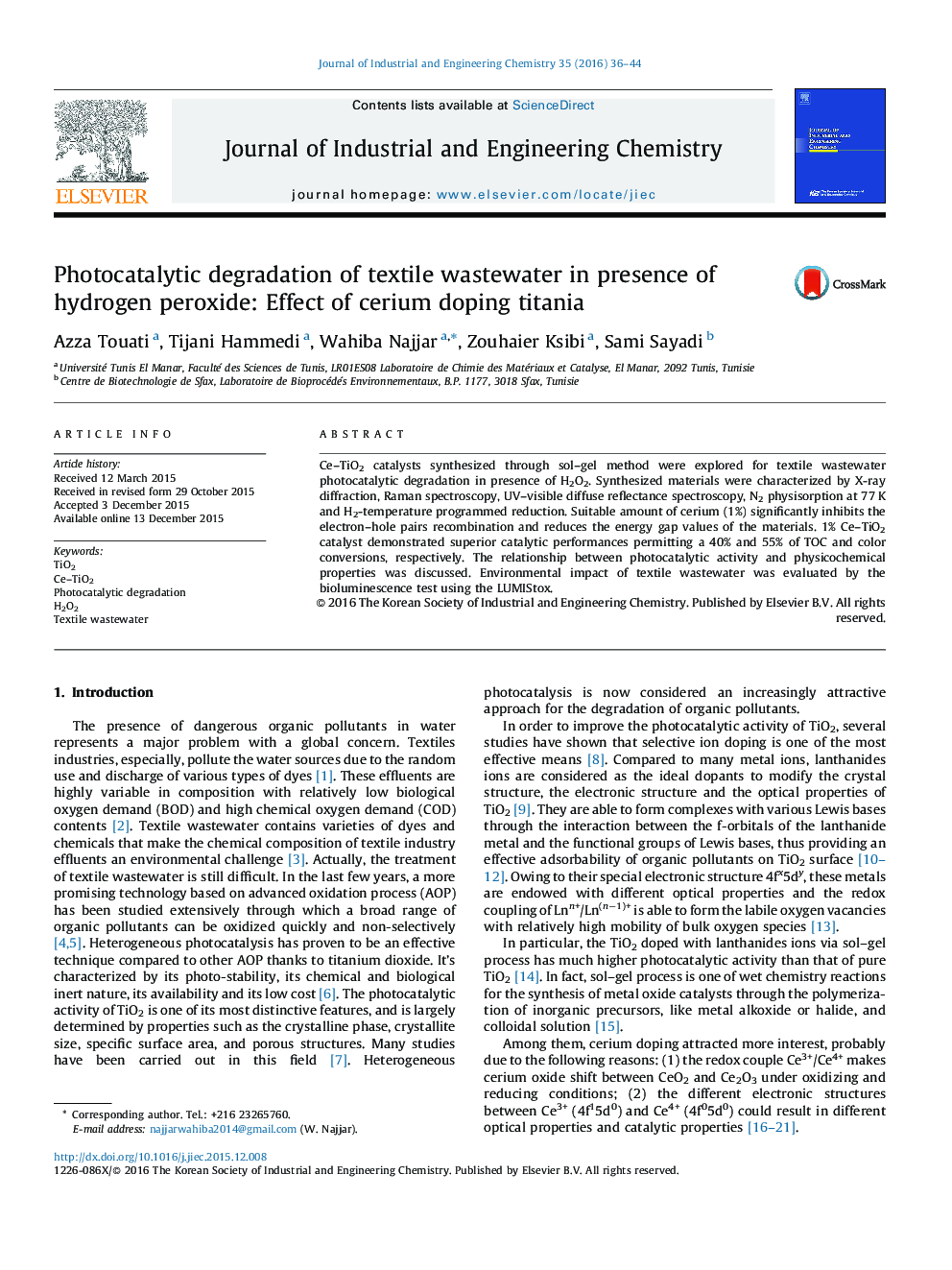| Article ID | Journal | Published Year | Pages | File Type |
|---|---|---|---|---|
| 227923 | Journal of Industrial and Engineering Chemistry | 2016 | 9 Pages |
•Ce–TiO2 materials prepared by sol–gel method are studied as photocatalysts.•Textile effluent was degraded by photocatalyse.•H2O2 was employed as oxydant.•The improvement of photoactivity depends of the presence of Ce doping ion.•Environmental impact was explored for the optimal test.
Ce–TiO2 catalysts synthesized through sol–gel method were explored for textile wastewater photocatalytic degradation in presence of H2O2. Synthesized materials were characterized by X-ray diffraction, Raman spectroscopy, UV–visible diffuse reflectance spectroscopy, N2 physisorption at 77 K and H2-temperature programmed reduction. Suitable amount of cerium (1%) significantly inhibits the electron–hole pairs recombination and reduces the energy gap values of the materials. 1% Ce–TiO2 catalyst demonstrated superior catalytic performances permitting a 40% and 55% of TOC and color conversions, respectively. The relationship between photocatalytic activity and physicochemical properties was discussed. Environmental impact of textile wastewater was evaluated by the bioluminescence test using the LUMIStox.
Graphical abstractFigure optionsDownload full-size imageDownload as PowerPoint slide
